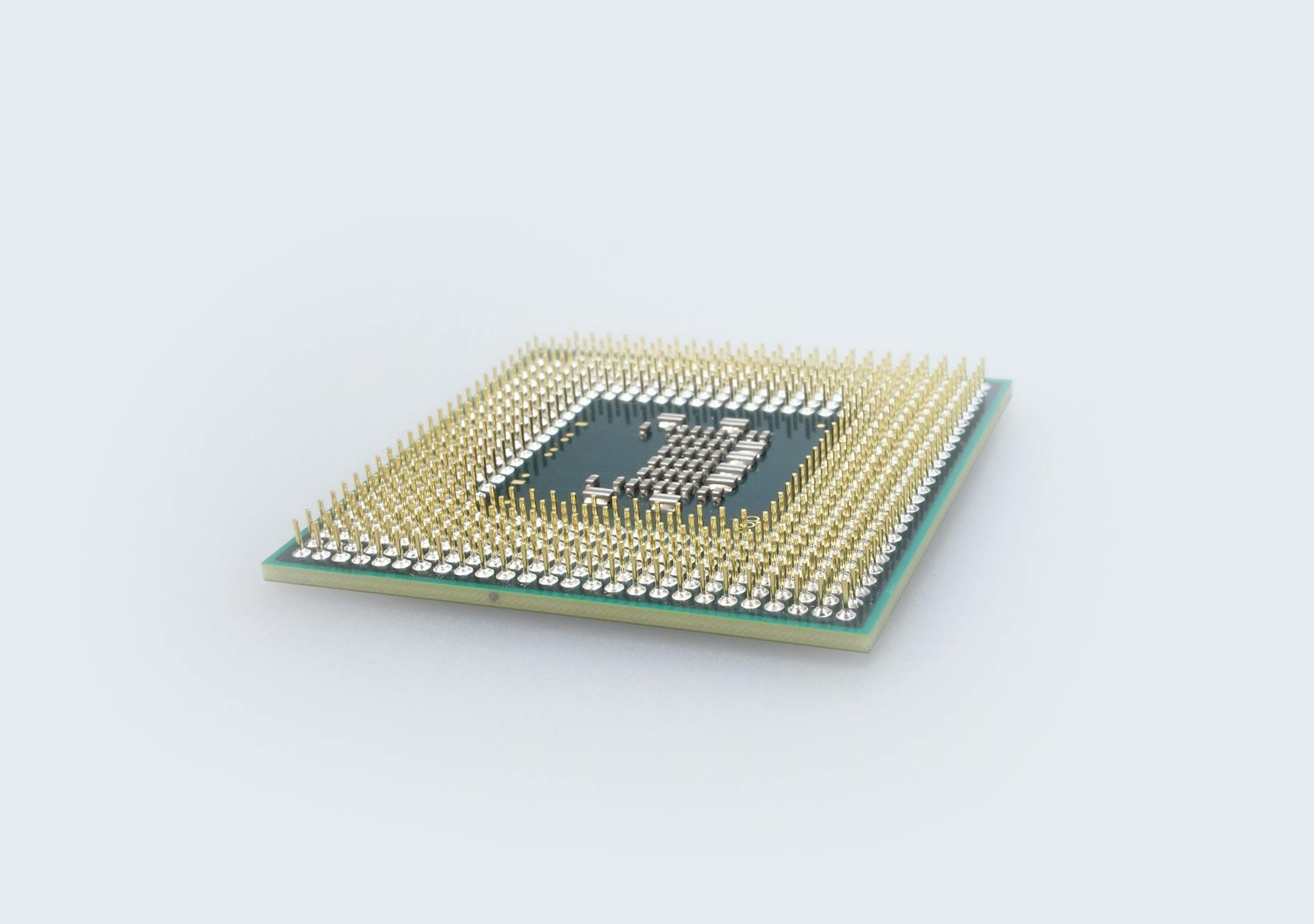By Cap Puckhaber, Reno, Nevada
I’m Cap Puckhaber, a marketing professional, amateur investor, part-time blogger and outdoor enthusiast. Today we break down the U.S. China trade war.
The competition between the United States and China to dominate the semiconductor industry is intensifying. The stakes in this China trade war are higher than ever. As both nations vie for supremacy in developing more powerful computer chips, this battle touches on national security and global economics. The race has far-reaching consequences for major players in the tech industry, including AMD, Nvidia, Super Micro Computers, Intel, and Google. Here’s a breakdown of how this geopolitical showdown could shape the future of the semiconductor market and its impact on global stocks.
The Strategic Importance of Semiconductors
Semiconductors are the backbone of modern technology. From supercomputers to smartphones and electric vehicles, chips power virtually every electronic device. However, the chips are not just critical for innovation. They are also increasingly seen as vital for national security. Both the U.S. and China understand that control over semiconductor manufacturing gives significant leverage in geopolitical power, economic growth, and technological advancements.
In recent years, China has ramped up efforts to create its own indigenous semiconductor production capabilities. The goal is to reduce dependence on U.S.-based manufacturers like Intel, Nvidia, and AMD. Meanwhile, the U.S. has sought to maintain its leadership by investing heavily in research and development. They have also imposed tariffs and sanctions on Chinese tech companies like Huawei and SMIC (Semiconductor Manufacturing International Corporation), seen as threats to U.S. tech dominance.
Tariffs, Trade Wars, and Their Impact on Chipmakers
Tariffs have been one of the most visible weapons in the trade war between the U.S. and China. The U.S. government has imposed heavy tariffs on Chinese-made electronics and chips. In response, China has implemented its own set of tariffs on American products. These tariffs affect companies like Intel, AMD, and Nvidia, which rely on global supply chains to manufacture and distribute their products.
For U.S. chipmakers, this has meant increased costs for manufacturing in China or sourcing materials from Chinese suppliers. Conversely, China’s domestic chip industry has faced obstacles in importing advanced chips, particularly those manufactured by U.S. companies. While China is pushing to ramp up its own semiconductor production, it remains significantly behind the U.S. in chip technology and manufacturing capacity.
The Role of Supercomputers and National Security
One of the primary drivers of this competition is the development of supercomputers, which rely on advanced chips for high-performance computing power. The U.S. has long been the leader in supercomputing, with top systems powered by processors from Intel and Nvidia. China, however, is closing the gap. The development of its own supercomputers, such as the “Sunway TaihuLight,” has ranked as one of the world’s fastest.
Supercomputers are crucial for national security, as they are used in military simulations, cryptography, AI development, and climate modeling. The geopolitical tensions around supercomputers and chip technology make these systems a central point of the U.S.-China tech war.
Impact on Chipmakers and the Stock Market
The ongoing tech war presents both opportunities and risks for major chipmakers. AMD, Nvidia, and Intel are at the forefront of the U.S. chip industry. While these companies benefit from increased demand for chips in computing, AI, and autonomous vehicles, challenges arise. They face tariffs, export restrictions, and competition from China’s rising tech giants. For instance, Nvidia and AMD could lose access to the Chinese market, where they have a significant presence, should tensions escalate.
Super Micro Computers, a major player in the server market, could also see mixed results. While it supplies hardware that relies on chips from Intel and AMD, increased costs due to tariffs or supply chain disruptions could impact profit margins.
For companies like Google, the chip war could influence AI and cloud infrastructure development. Google has been developing its own chips for AI workloads, such as the Tensor Processing Unit (TPU). This reduces its reliance on external suppliers. If the U.S. and China continue to impose restrictions on chip exports, tech companies might accelerate their own chip development to avoid supply chain vulnerabilities.
Global Economic Implications
The global economy is intricately tied to the semiconductor industry. The U.S.-China tech war over chips could lead to uncertainty in global markets. Trade restrictions and tariffs potentially slow technological progress. While the U.S. and China race to develop new, more powerful chips, other countries like the European Union and Taiwan are working to build semiconductor infrastructure. This creates a more fragmented global market.
For investors, the impact of the ongoing battle on stocks could be mixed. U.S. chipmakers like Nvidia, AMD, and Intel are positioned to capitalize on growing demand for advanced chips, particularly in AI and supercomputing. However, global supply chain issues, rising production costs, and restrictions on Chinese tech companies could introduce volatility. Also, companies in China, such as SMIC, could face difficulties as they try to match their American counterparts, making their stocks more speculative in the near term.
Conclusion
The war between China and the U.S. over semiconductor supremacy is far from over. It’s clear that the stakes are high. This technological race reshapes the landscape for chipmakers and tech companies alike. As businesses like AMD, Nvidia, Intel, Super Micro, and Google navigate this turbulent environment, the outcome of the U.S.-China tech war will have lasting effects. It impacts global supply chains, national security, and the economy. For investors, understanding these dynamics is key to navigating the future of the tech sector and the broader market.
This post is brought to you by Simple Finance Blog, hosted by Cap Puckhaber of Black Diamond Marketing Solutions. Join us as we break down complex financial topics in simple terms to help you make informed decisions.
New to Simple Finance Blog is my take on How to Start Trading Forex by Cap Puckhaber
Check out my latest blog on Traditional and Roth IRA by Cap Puckhaber
If you haven’t seen it yet check out my blog on Day Trading for Beginners by Cap Puckhaber
Investing Blog for Beginners
Hosted by Cap Puckhaber of Black Diamond Marketing Solutions, this investing blog offers daily articles on investing, savings, bonds, interest rates, mortgages, and more.



About the Founder / Author
Cap Puckhaber is a seasoned marketing strategist and finance writer, based in Reno, Nevada with over 20 years of experience investing, marketing and helping small businesses grow.
He offers expert advice on how to save for retirement, how to use a retirement calculator and the difference between T-Bills and CDs.
Cap Puckhaber shares actionable insights on how to promote your business locally for free and on trending platforms like X.
He shares his personal investment journey, how to use trade volume to predict breakouts, and his take on covered call strategies.

Follow Cap Puckhaber Online
Connect with Cap Puckhaber on Facebook
See Real-Time Thoughts on X
Read In-Depth Articles on Medium
Subscribe to Cap Puckhaber’s Substack Newsletter
Follow Cap Puckhaber’s Company Page on LinkedIn
View Our Agency Profile on DesignRush
See Cap Puckhaber’s Agency on Agency Spotter
Explore Technical Projects on GitHub
See Cap Puckhaber’s Creative Portfolio on Behance
Learn more about my company on Crunchbase
Join Cap Puckhaber’s Conversation on BlueSky
Follow My Updates on Mastodon

Backpacker, Marketer, Investor, Blogger, Husband, Dog-Dad, Golfer, Snowboarder
Cap Puckhaber is a marketing strategist, finance writer, and outdoor enthusiast from Reno, Nevada. He writes across CapPuckhaber.com, TheHikingAdventures.com, SimpleFinanceBlog.com, and BlackDiamondMarketingSolutions.com.
Follow him for honest, real-world advice backed by 20+ years of experience.



Leave a Reply